This article discusses milia, which are small, white, or yellowish bumps that appear on the skin, particularly around the eyes, cheeks, and forehead. Unlike acne, which is caused by oil and bacteria clogging the pores, milia are caused by trapped dead skin cells that form a small cyst beneath the surface of the skin. While generally harmless, milia can be unsightly and difficult to remove without proper treatment. This article provides an overview of milia, including its causes, symptoms, types, and treatment options. It is important to note that milia can be mistaken for other skin conditions and that it is best to consult a dermatologist for an accurate diagnosis.
Understanding Milia
Milia are small, white, or yellowish bumps that often appear on the face, particularly around the eyes, cheeks, and forehead. They are common in people of all ages, from infants to adults. While milia are often mistaken for acne, they are actually quite different. Unlike acne, which is caused by oil and bacteria clogging the pores, milia are caused by trapped dead skin cells that form a small cyst beneath the surface of the skin. While milia are generally harmless and do not require treatment, they can be unsightly and may cause concern for some people. Understanding what milia are and how they form can help individuals take the appropriate steps to prevent and treat them.
Discover effective ways to combat acne outbreaks and prevent scarring by reading this article about acne.
Milia Symptoms
While milia bumps are generally harmless, they can be unsightly and may cause concern for some individuals. Here are some common symptoms associated with milia:
- Small, white, or yellowish bumps: The most obvious symptom of milia is the appearance of small, white, or yellowish bumps on the skin. These bumps are typically 1-2 millimeters in size and are raised slightly above the surface of the skin.
- Clusters of bumps: Milia can occur in clusters, particularly around the eyes and cheeks.
- Firm to the touch: Milia bumps are typically firm to the touch and cannot be squeezed or popped like a pimple.
- No associated redness or inflammation: Unlike acne, milia bumps are not typically accompanied by redness, inflammation, or pain.
- Occur in people of all ages: Milia can occur in people of all ages, from infants to adults.
- Typically non-itchy: While milia can be unsightly, they are typically not itchy or painful.
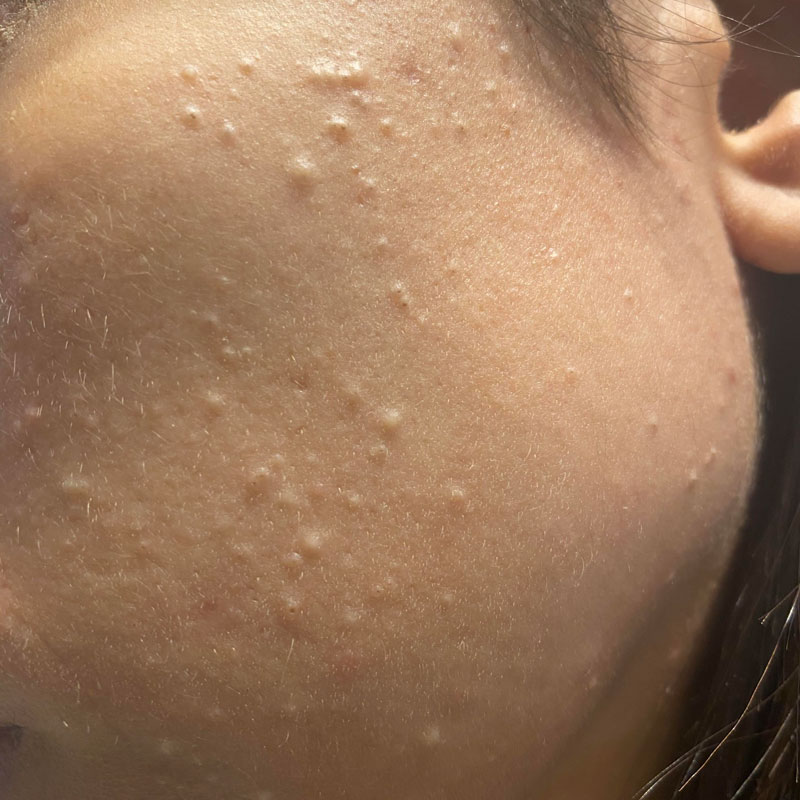
It’s important to note that milia bumps can be mistaken for other skin conditions, such as whiteheads or acne. If you are unsure if you have milia, it’s important to consult a dermatologist for an accurate diagnosis. Additionally, while milia are generally harmless, they can sometimes be a sign of an underlying medical condition, so it’s important to seek medical attention if you have any concerns.
Milia Causes
Milia bumps are typically caused by trapped dead skin cells that form a small cyst beneath the surface of the skin. However, there are several other factors that can contribute to the development of milia.
Here are some of the most common milia causes:
- Skin damage: Any type of skin damage, such as burns, blisters, or rashes, can cause milia to form. This is because damaged skin cells are more likely to become trapped and form a cyst.
- Sun damage: Prolonged exposure to the sun can cause milia to form. This is because UV rays can damage the skin and make it more susceptible to developing cysts.
- Use of heavy skincare products: Using heavy skincare products, such as moisturizers or creams, can also contribute to the formation of milia. This is because these products can clog the pores and trap dead skin cells.
- Use of steroid creams: Topical steroid creams, which are often used to treat skin conditions like eczema and psoriasis, can also cause milia to form.
- Genetic factors: Some people may be more prone to developing milia due to their genetics.
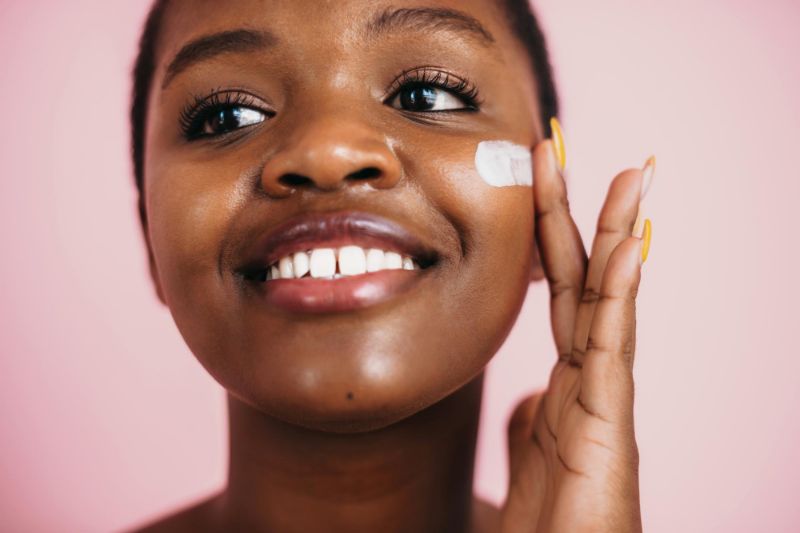
It’s important to note that milia can develop for a variety of reasons, and it may not always be possible to pinpoint a specific cause. However, by understanding the common factors that contribute to milia formation, individuals can take steps to prevent their development or reduce their severity.
Milia Types
Milia can be classified into different types based on their location and cause. Here are some common types of milia:
- Primary milia: This type of milia is the most common and typically appears on the face, particularly around the eyes, cheeks, and forehead.
- Neonatal milia: This type of milia is commonly seen in newborns and infants and usually appears on the nose and cheeks.
- Milia en plaque: This rare type of milia appears as a patch of tiny bumps and is typically seen on the ears, eyelids, and cheeks.
- Traumatic milia: This type of milia can occur after an injury to the skin, such as a burn or blister.
- Drug-induced milia: Certain medications, such as steroid creams, can cause milia to form on the skin.
- Multiple eruptive milia: This rare type of milia appears as multiple bumps that develop rapidly over a short period of time and are typically seen on the face and upper body.
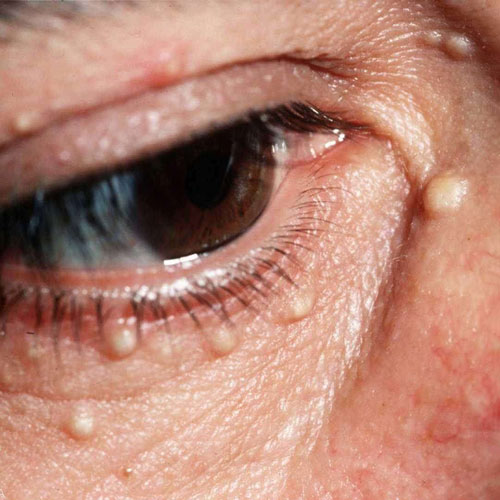
Understanding the different types of milia can help with accurate diagnosis and treatment.
Milia on Face and Eyelids
Milia on the face and eyelids are common and can be frustrating for those who experience them. These small, white bumps are often harmless but can be unsightly and difficult to remove without proper treatment.
Milia on the face are typically found around the eyes, cheeks, and forehead. They can be caused by a variety of factors, including clogged pores, sun damage, and using heavy skincare products. Milia on the eyelids are often caused by the use of heavy eye creams or makeup.
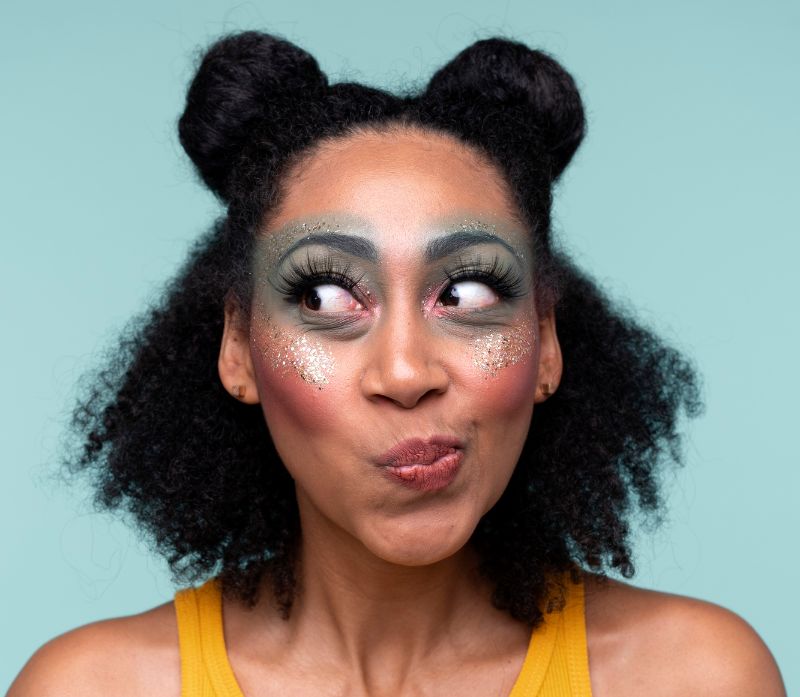
While milia on the face and eyelids are generally harmless, they can sometimes be a symptom of an underlying condition, such as a genetic disorder or autoimmune disease. It’s important to speak with a dermatologist if you experience milia that is widespread or accompanied by other symptoms.
Overall, while milia on the face and eyelids can be frustrating, they are generally harmless and can be effectively treated with professional help.
How To Treat Milia?
Milia treatment can vary depending on the individual case, but there are several effective options available to those dealing with these small, white bumps on the skin.
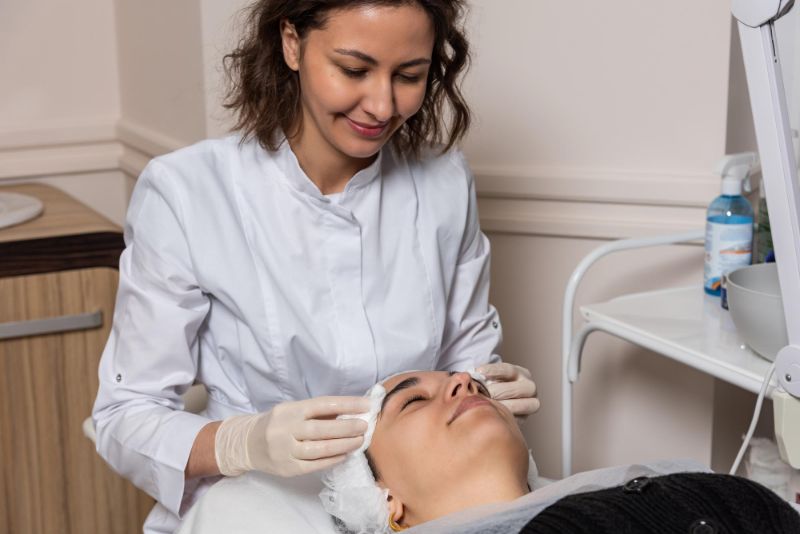
One of the most common treatments for milia is to have them removed by a dermatologist. This can involve using a small needle or blade to puncture the comedones and remove the trapped keratin inside. Laser treatment is another option that can be effective in removing milia.
Click to discover everything you need to know about comedones and how to get rid of them for good!
In addition to professional treatments, there are also several things individuals can do at home to help reduce the appearance of milia and prevent them from forming in the future. These include:
- Exfoliation: Regular exfoliation can help to remove dead skin cells and unclog pores, reducing the likelihood of milia forming.
- Using lightweight skincare products: Heavy creams and oils can contribute to the formation of milia, so using lighter, oil-free products can be beneficial.
- Sun protection: Protecting the skin from the sun’s harmful rays can help to prevent damage that can lead to the development of milia.
How do I get rid of my milia?
- Do not attempt to remove milia at home: Trying to remove milia at home can lead to scarring and infection. It’s best to leave the removal process to a dermatologist.
- Use retinoids: Retinoids can be effective in reducing the appearance of milia by promoting cell turnover and unclogging pores.
- Chemical peels: Chemical peels can help to remove the top layer of skin, which can reduce the appearance of milia.
- Microdermabrasion: This treatment involves using a machine to gently exfoliate the skin, which can help to remove milia and other skin imperfections.

Overall, milia treatment can be highly effective, but it’s important to consult with a dermatologist to determine the best course of action for each individual case. By taking steps to prevent milia and using professional treatments when necessary, individuals can achieve clear, healthy skin.
Preventing Milia
Here are some tips on preventing milia:
- Cleanse your skin regularly: Keeping your skin clean and free of excess oil and debris can help prevent the buildup of dead skin cells that contribute to the development of milia. Use a gentle cleanser and avoid harsh scrubs or exfoliants that can irritate the skin.
- Protect your skin from the sun: Sun damage can lead to the formation of milia, so be sure to wear sunscreen daily and limit your exposure to the sun. Find a broad-spectrum sunscreen with a minimum SPF of 30.
- Avoid using heavy skincare products: Thick, heavy creams and lotions can clog pores and contribute to the development of milia. Keep an eye out for lightweight, non-comedogenic products that will not clog your pores.
- Don’t pick or squeeze milia: Trying to remove milia yourself can lead to scarring and infection. If you want to get rid of milia, it’s best to see a dermatologist for professional treatment.
- Eat a healthy diet: Eating a diet rich in vitamins and minerals can help keep your skin healthy and reduce your risk of developing milia. Incorporate plenty of fruits, vegetables, and whole grains into your diet, and limit your intake of processed foods and sugary snacks.

By following these tips, you can help prevent the formation of milia and keep your skin looking healthy and clear. Keep in mind that results may take time to appear, so it’s important to be patient. If you are concerned about your skin or have persistent milia, be sure to consult a dermatologist for professional advice and treatment.
Conclusion
In summary, milia bumps can be a cosmetic concern, and it is important to understand their causes, symptoms, types, and treatment options. While milia can be mistaken for other skin conditions, it’s best to consult a dermatologist for an accurate diagnosis. Remotederm online dermatology consultation services offer a convenient option that can be accessed from anywhere, eliminating the need for long waits to visit dermatologists in person.

By understanding the common factors that contribute to milia formation, individuals can take steps to prevent their development or reduce their severity. It’s also important to note that milia can sometimes be a sign of an underlying medical condition, so it’s important to seek medical attention if you have any concerns.
FAQs
- How are milia different from acne?
While acne is caused by oil and bacteria clogging the pores, milia are caused by trapped dead skin cells that form a small cyst beneath the surface of the skin.
- Are milia bumps harmful?
Milia bumps are generally harmless and do not require treatment, but they can be unsightly.
- When should you consult a dermatologist regarding milia?
If you are unsure if you have milia, it’s important to consult a dermatologist for an accurate diagnosis. Additionally, if you have any concerns or milia are accompanied by other symptoms, it’s important to seek medical attention.
- How can Milia be diagnosed?
Milia can be diagnosed by a dermatologist, who will examine the bumps and may take a biopsy to rule out other conditions.
- Are there different types of milia?
Yes, milia can be classified into different types based on their location and cause, including primary milia, neonatal milia, milia en plaque, traumatic milia, drug-induced milia, and multiple eruptive milia.
